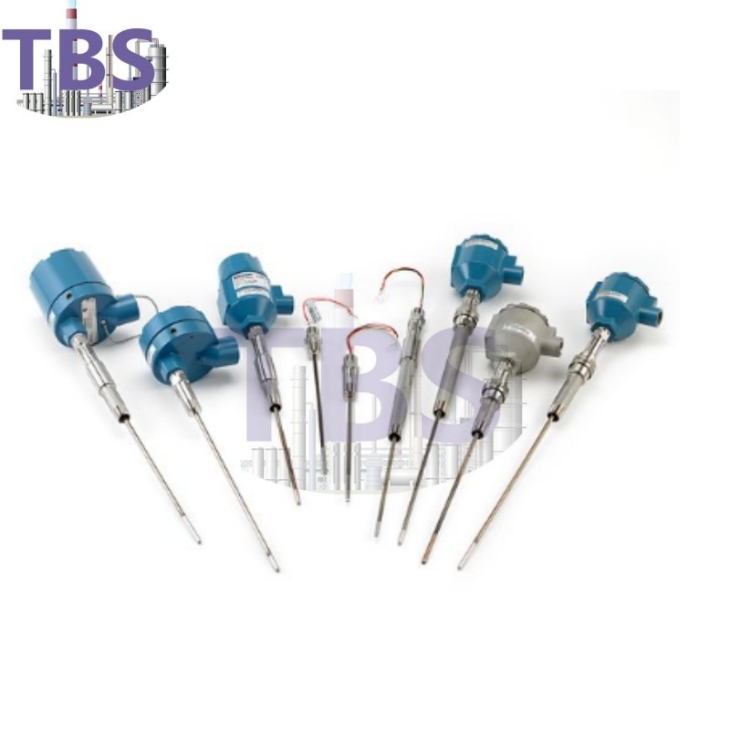Rosemount 214C RTD Temperature Sensor |
Includes spring-loaded or compact spring-loaded mounting styles for adaptability
Thin film sensor engineered to withstand high vibration industrial applications
Wire-wound design for applications requiring high accuracy, dual-elements and/or are subjected to high temperatures
Single or dual element Pt-100 RTD with thin-film or wire-wound designs meets various application requirements
Rosemount Rosemount214C RTD Temperature sensor Overview:
The 214C RTD uses the industry-standard PT100 sensor type. It is available using a thin film element, better in vibration and physical shock, or a wire wound element for a wider temperature range and better for low-temperature applications. Numerous calibration ranges which include multiple points and Callendar-Van Dusen constants, allow for unmatched accuracy.
Specifications are defined by measurements collected per methods defined in IEC 60751:2008. Effects of temperature cycling for the 214C RTD are ±0.15°C (0.059Ω) maximum ice-point resistance shift following 10 cycles over the maximum specified temperature range. The hysteresis is ±0.50 °C (0.185 ) maximum ice-point resistance shift over the maximum specified temperature range.
Rosemount 214C temperature sensors are available with immersion lengths from 2 to 78-1/2 inches (50 to 2000mm) in 1/4-inch (5mm) increments. All sensor styles and lengths have a standard 1/4-inch (6mm) nominal diameter. Multiple options for connection heads, accuracy, mounting styles, extensions and other factors are also available.
The Rosemount 214C temperature sensors can be combined with process-ready or hand-tight transmitter, sensor, and/or thermowell assemblies to deliver a complete temperature solution.
To meet your required process temperature measurement standards. This reliable sensor covers a wide temperature range and is available in type J, K or N thermocouples (IEC5841 class) with or without hot bushing to meet a wide range of application requirements.
Rosemount™ 214C RTD Temperature sensor specifications:
Temperature range -196 to 600 °C (-321 to 1112 °F)
Precision Class A or B
Vibration limit For thin film components, according to IEC 60751:2008, freezing point resistance drift of 0.05 °C (0.020) is measured after 150 hours of 3g vibration between 20 and 500 Hz for wound components, according to IEC 60751:2008. Freezing point resistance drift of 0.05 °C (0.020) measured after 150 hours of 1g vibration between 20 and 500 Hz
24 AWG leads; FEP insulation; Color coding according to IEC 60751
Time constant/response When tested in moving water according to IEC 60751:2008, it takes 10.8 seconds to achieve 50% sensor response *
Rosemount™ 214C RTD temperature sensor function:
Single or dual element Pt-100 RTDS with thin film or winding designs are available for a variety of applications
Industry applications where thin film sensors withstand high vibration
The winding design is suitable for applications requiring high precision and dual components and/or high temperature applications
Covering a wide temperature range from -196 to 600°C (-321 to 1112°F) for greater flexibility in applications
The Callendar-Van Dusen constant facilitates transmitter-sensor matching, resulting in higher accuracy
Optional Class A accuracy ensures critical temperature measurement points meet tolerances and accuracy standards
A variety of housing and connector options make it suitable for a wide range of applications
Includes spring pressure or compact spring pressure mounting types for better applicability
North America meets the demand for hazardous sites











